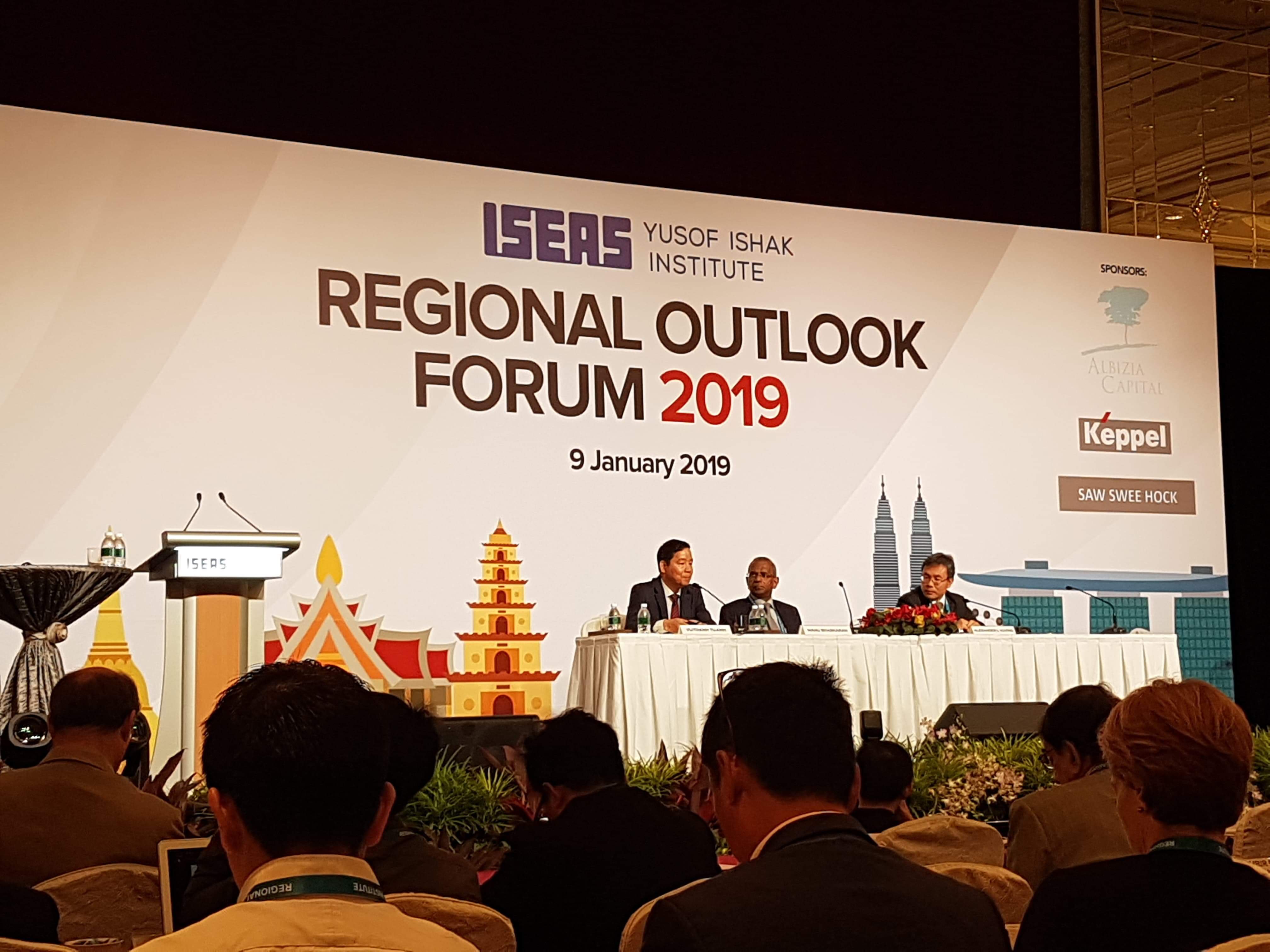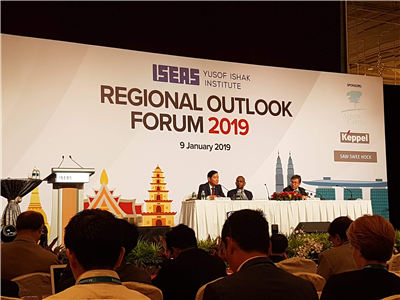On 9th January 2019, in Singapore, Dr. Vu Thanh Tu Anh, Dean of Fulbright School of Public Policy and Management attended the Regional Outlook Forum 2019 organized by Yusof Ishak Institute. With more than 650 participants, Dr. Tu Anh joining with other distinguished scholars and intellectuals discussed macro trends, developments and challenges facing Southeast Asia in the immediate, short and medium term. At the conference, Dr. Tu Anh presented about the need to transform Vietnam’s growth model and features of new growth model.

Below is the summary of Dr. Tu Anh's presentation at the conference.
Vietnam – In Search of a New Growth Model?
Over the last three decades since Doi Moi (1986), Vietnam has been able to maintain an impressive average growth rate of 6.8%, thereby transforming itself from a low-income to middle-income country. Poverty rate declined from 60% to below 10%. Vietnam today ranks 44th in terms of nominal GDP and 34th in terms of purchasing power parity (PPP) in the world. However, compared to successful economies in the region, Vietnam is indeed falling behind in absolute term.
Why new growth model? The Government of Vietnam has recently acknowledged that its “extensive growth model” which relies heavily on cheap labor and natural resources is running out of steam. In the last decade, both real and potential GDP growth rates are falling. Moreover, there are emerging factors threatening the sustainability of economic growth, e.g. climate change, environmental pollution, income inequality, vulnerability to external shocks. Hence, not only has the quantity of growth of Vietnam been declining, its growth quality and sustainability are also showing alarming signs.
Features of the new growth model? There have been extensive discussions in recent years in Vietnam on how to restructure the economy and transform its growth model. While no consensus has been reached, there is emerging agreement about the new engines of growth, namely the private sector, technology, and cities. The adoption of these new growth engines requires fundamental shifts in the government’s economic priorities, from state-owned enterprises to private sector, from cheap labor and capital accumulation to technology and innovation, from rural and agricultural development to urban and service economy. These shifts, if effectively implemented, will have overarching policy implications, ranging from tax to industrial policy to education and technology policy.
Unknown factor: US – China trade war. Locating at the heart of a geo-politically contestable region while being very open to international trade, Vietnam is likely to be significantly impacted by the escalating US – China trade war. In the short run, Vietnam may gain from trade diversion away from China. Quantitatively, the effect seems to be modest since the Vietnamese exports which are similar to those subject to punitive tariff of China is only US$ 13 billion, or less than 6 percent of Vietnam’s total export in 2018. In the medium term, Vietnam may benefit from the reallocation of foreign investment from China. It is important to emphasize that the trade war is just the tip of the iceberg of a comprehensive strategic competition between the United States and China. As such, while Vietnam can benefit economically in the short- and medium-term, it may find itself in an awkward political situation in which it has to make choice between the two world powers.
Related Articles

Money, Monetary Policy and Central Bank

Money, monetary policy and central bank


